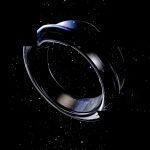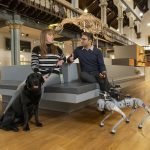
The group behind the Bluetooth standard wants to add COVID-19 exposure detection to wearable devices.
In an announcement today, the Bluetooth SIG (Special Interest Group) said that it is working with over 130 member companies to add the potentially lifesaving feature to wearables.
Google and Apple have already developed a cross-platform, Bluetooth-based COVID-19 detection system for smartphones. The proposal by the Bluetooth SIG would extend that system to wearables (say for people who workout with just their Apple Watch or similar device.)
“It is incredibly inspiring to see the Bluetooth community’s collaboration in finding and creating innovative ways to leverage Bluetooth technology to address the COVID-19 pandemic,” said Mark Powell, CEO of the Bluetooth SIG.
“We are grateful for the dedication and commitment of the Bluetooth members and proud of their work on this important effort.”
The Bluetooth SIG also highlights that many children don’t have smartphones, but COVID-19 could present a risk both to themselves and even others unknowingly in the case of asymptomatic carriers.

Anyone at particular risk could be equipped with a basic, low-cost Bluetooth device to ensure they can be notified if they’ve been in the vicinity of a confirmed case of COVID-19.
“There are several population groups critical to managing the spread of diseases like COVID-19 with relatively low smartphone penetration, presenting a coverage challenge for smartphone-based Exposure Notification Systems (ENS),” said Elisa Resconi, a physics professor at the Technical University of Munich now leading research on non-pharmaceutical interventions against COVID-19.
“We believe including wearable devices in an ENS would be a very effective method for extending its reach to support these important groups.”
Of course, devices without on-board connectivity will need to connect to a device with internet access periodically in order to update the network with their contacts.
Much like the smartphone implementation, all personal data is anonymised behind unique IDs.
The Bluetooth SIG is expecting to release an initial draft within the next few months, but there’s no word yet on any initial supporting devices.
Hopefully, it reaches our wrists sooner rather than later. Research suggests that if 60 percent of any population uses an exposure notification system, the spread of COVID-19 could be stopped entirely.
You can find out more about Bluetooth SIG’s ENS plan for wearables here.
(Photo by Artur Łuczka on Unsplash)
Interested in hearing industry leaders discuss subjects like this? Attend the co-located 5G Expo, IoT Tech Expo, Blockchain Expo, AI & Big Data Expo, and Cyber Security & Cloud Expo World Series with upcoming events in Silicon Valley, London, and Amsterdam.







I imagine that all these anti-COVID 19 solutions reaching the market relay on the BT RSSI feature. Unfortunately, we some know how erratic this signal can be, mining that if they don’t filter this signal with another feature related to the positive detection, all this contact tracing devices are only going to become a useless massive source of false positives. The only solution I could possibly imagine –although not perfect– to solve this fiasco would be adding the time of exposition to the RSSI positive, and discard all the RSSI positives below a certain amount of time persistence.
this will be the greatest invasion of privacy known to mankind. These are terrible tests fraught with so many false positives that people will be afraid to move. PCRs were never made to diagnose, they were made to follow progressions of titers. This is a wrong move and the wrong reason for this motivation.